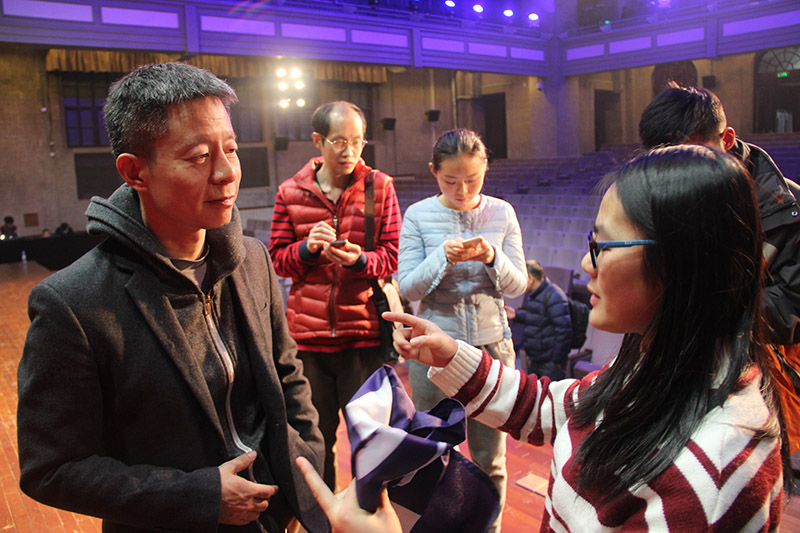FAST - The Super Eye to Watch the Cosmos
On Dec. 19th 2016, the 16th session of the "New Worlds, New Horizons" Public Lecture series was held at Tsinghua Auditorium. The lecture was delivered by Prof. Di Li, Project Scientist of the FAST Program. The lecture attracted a large audience of students, faculties as well as the general public to attend. There were also 13,000 viewers watching the live lecture online.
FAST, the Five-hundred-meter Aperture Spherical Telescope is entitled "China Sky-eye". Built in the natural Karst landscape of southern Guizhou Province and completed this year on Sep. 25th, FAST is the most powerful single antenna radio telescope with the largest aperture in the worldwide.
Prof. Li began his lecture by revealing the mysteries of radio astronomy. Radio astronomers take samples of electromagnetic fields from space in accordance with time and they study the information collected from phases, amplitudes, and polarizations, etc. of the magnetic field. With frequencies lower than that of visible light, these electromagnetic waves carry secret information undetectable by human eye. Therefore, radio astronomy could serve as a "super sense" for humans to perceive cosmic electromagnetic waves.
Then he introduced the history of the development of radio astronomy as well as a number of renowned telescopes. In the post-war period, radar technologies were applied to astronomical observations, which marked the beginning of radio astronomy. To improve the resolution of radio telescopes, scientists and engineers have built increasingly larger apertures and higher precision of the telescopes. The immense Green Bank Telescope in America, for instance, needs its location accuracy to be controlled within a millimeter, even though its mass is over 7,000 tons with an aperture of 100 meters. Even more famous is the "Giant's Dream", the 300-meter-aperture Arecibo Observatory, which has also yielded scientific breakthroughs in the past half-century ever since its birth in the 1960s when radio astronomy was in its early period.
What are the scientific goals of the enormous "eye"-FAST? Prof. Li. Emphasized three major aims: Firstly, the observation of the 21-centimeter line of neutral hydrogen atoms, which plays an important role in cosmology and galaxy evolution; secondly, the study of pulsars, which is also to detect low-frequency gravitational waves; and thirdly, the decoding of information on interstellar molecules, which provides clues of the origin of life in the universe. Meanwhile, data from FAST observations would also help to better understand the origin of Fast Radio Bursts.
Prof. Li also recalled the history of Fast project with a time span of more than two decades from the initial idea in 1994 to the completion in 2016; it witnessed the variations of scientific goals with the growth of radio astronomy. FAST is the fruit of inspirations and perspirations of generations of Chinese astronomers.

In the end, Prof. Li answered questions from the audience. Questions concerning the comparison between FAST and SKA (Square Kilometer Array) were raised. Problems about the conflicts between astronomical research and local tourism were also inquired about. While FAST still faces significant challenges, Prof. Li finished his talk on optimistic notes that it will unravel further mysteries of the cosmos.



